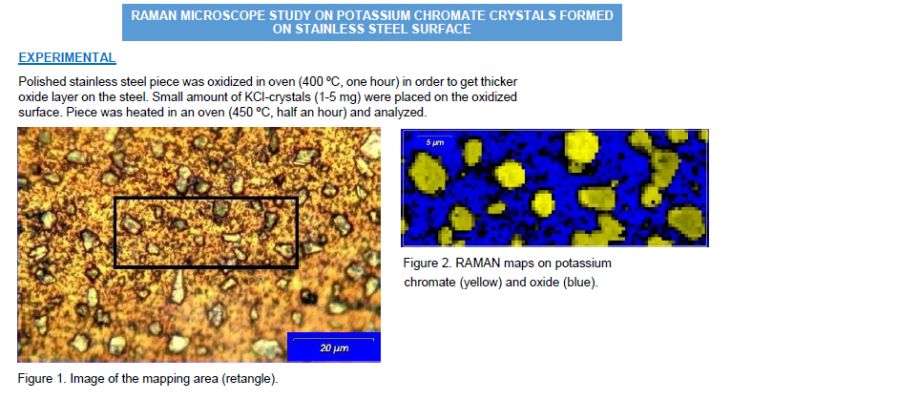All the molecules around us are vibrating at their specific frequencies. Vibration is always associated with radiation absorption and molecular absorption typically occurs in prolonged infrared spectra of visible light. Combining laser light and sensitive analyzer we can detect the functional groups of a molecule since they all have unique absorbtion frequencies. This is the foundation of FTIR and RAMAN spectroscopy methods.
FTIR-spectroscopy
Fourier Transform InfraRed (FTIR) -spectroscopy based on the mathematical Fourier transform is virtually the only alternative to measuring the IR spectrum. The differences between the devices are mainly related to the sample analysis method. The zinc electrolytic ATR unit used by Top Analytica Oy can measure solutions, powdery samples and solid materials based on reflection.
Applications
- Material indentification (library comparison)
- Impurity identification (dirty spots)
- Reference comparison
- Functional group indentification
- Quantitative analysis (requires standard)
- Anallysis depth 1-10 µm
Sample material
- Liquids, solids, powders
- Sample must contain covalent bonds
- Organic materials like plastic, oil and waxes
- Inorganic materials like carbonates, suplhates and phosphates
- Metals are not IR-active
RAMAN-spectroscopy
Raman spectroscopy uses laser light to generate an analytical signal. First, the intensity of the laser is strong enough to be able to register the weak changes in light scattering, but it is also suitable for a sufficiently small area. The information thus produced includes the possibility of analyzing small objects, up to microns of size, and the weak signal can be distinguished from background radiation, that is, the part of the signal whose energy has not changed as a result of scattering.
In addition to the standard point analysis, Top Analytica Oy’s instrument can perform quick inventory of material from a relatively large area up to several square centimeters. In this connection, the device can perform a fast PC (principle component) analysis that can be utilized in the phase interface mapping. In addition, Raman’s advantage over the FTIR device is its surface sensitivity, spatial resolution, easy sample preparation, and 3D mapping. The Raman instrument can measure film thicknesses roughly and analytically with interesting items, for example inside a glass jar. Raman is particularly suitable for the analysis of carbon compounds, electrically conductive polymers and metal oxides.
Applications
- Material indentification (library comparison)
- Impurity identification (dirty spots)
- Reference comparison
- Phase interface mapping
Sample materials
- Liquids, solids, powders
- Metaloxide, carbon bonds
- Mainly covalent bond spectrometry
Excamples




